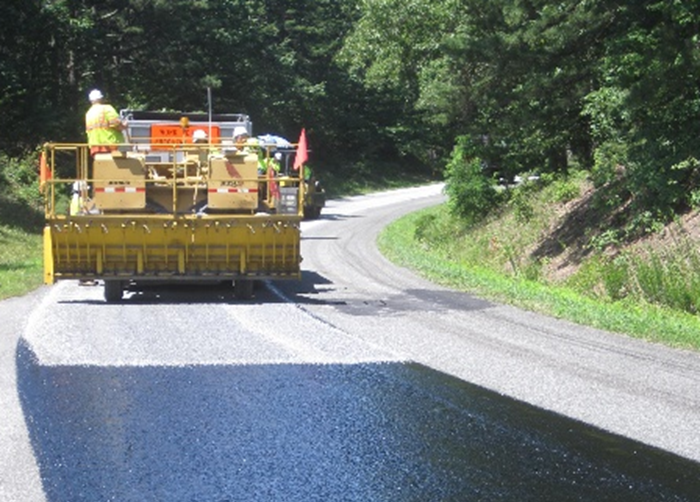News Release
You are viewing ARCHIVED content published online before January 20, 2025.
Please note that this content is NOT UPDATED, and links may not work. For current information,
visit https://www.nps.gov/aboutus/news/index.htm.

NPS
|
Subscribe
|
Contact: BLRI Public Affairs
Bedford, VA – The National Park Service announced today that over 38 miles of the Blue Ridge Parkway in Virginia will be resurfaced this summer as part of a pavement preservation program on the historic motor route. Work is expected to start next week and continue through this September. Visitors that encounter active work zones can expect short duration, single lane closures.Work will take place in the following locations, including paved overlooks.
- Milepost 27.3 to 37.6, Whetstone Ridge / Montebello area (10 miles)
- Milepost 64.6 to 86.2, James River to Peaks of Otter area (22 miles)
- Milepost 89.1 to 97.2, Powell Gap to Taylors Mountain Overlook area (8 miles)
- Check the Parkway's Alerts and Conditions page for regular updated work zone information.
- Expect delays while work takes place Monday through Friday. Lane closures will be managed with flagging operations and a pilot car to lead traffic through work zones.
- Observe reduced speed limits in work zones, 24 hours a day, 7 days a week; to maintain safe operations and allow for proper curing of pavement.
- Anticipate loose gravel on the road surface during pavement curing times. Bicyclists and motorcyclists are asked to exercise extreme caution as loose gravel on top of the paved surface, during the required curing time, could result in loss of control. On-site message boards will advise against bikes.
- When circumstances prevent bicyclists from keeping up with traffic, dismount and move off the road to let the on-coming traffic pass when traveling through a single lane closure.
The Blue Ridge Parkway inventory of paved roads includes bridges, tunnels, parking areas, spur roads, service roads, campground, and picnic area roads, in addition to the 469-mile Parkway motor route itself. Given the large inventory of paved surfaces along the Parkway, and to effectively invest available funding, the pavement preservation strategy focuses on keeping the good sections good and returning fair sections to good condition.
Pavement preservation is a regular road maintenance strategy in national parks. Studies find that for each dollar spent on pavement preservation between $6 and $10 in future pavement rehabilitation costs are saved. Funding for road maintenance in national parks, including the Parkway, comes in large part from the Highway Trust Fund, which is derived from a federal gas tax managed by the Federal Highway Administration.
Last updated: June 7, 2024
